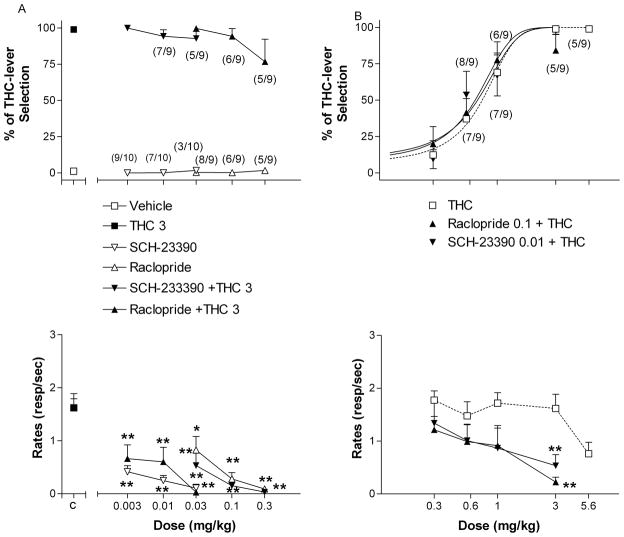Figure 4.
Effects of the dopamine D2 antagonists raclopride and the dopamine D1 antagonist SCH-23390 on the discriminative effects of the 3 mg/kg training dose of THC (A), and effects of selected doses of raclopride (0.1 mg/kg) and SCH-23390 (0.01 mg/kg) on the dose-response curve for THC discrimination (B). Ordinates: overall percentage of responses on the lever associated with THC administration (upper panels) and overall rate of lever pressing expressed as responses per seconds (lower panels) averaged over the entire session. Abscissae: dose in mg/kg (log scale). C = control values for 3 mg/kg THC and vehicle alone. Results represent means±SEM from 9 rats. Repeated measures ANOVA followed by post-hoc Dunnet’s test: **: p<0.01 compared to vehicle. Numbers in parentheses at higher doses indicate the number of rats that completed at least one fixed ratio during the session over the total number of rats in which the dose was tested. Dose-response curve data for THC are the same as shown in Fig. 1.

